T. Homma, S. Kobayashi, J. Fujii (2022)
Cells 11:1603 DOI: 10.3390/cells11101603
Z. Huang, J. Han, P. Wu, C. Wu, Y. Fan, L. Zhao, X. Hao, D. Chen, M. Zhu (2022)
Oxid. Med. Cell. Longev. Article ID 5463134 DOI: 10.1155/2022/5463134
C. Chen, J. Chen, Y. Wang, Z. Liu, Y. Wu (2021)
J. Biol. Chem. 296:100187 DOI: 10.1074/jbc.RA120.015779
Y. Li, X. Zeng, D. Lu, M. Yin, M. Shan, Y. Gao (2021)
Hum. Reprod. 36:951-964 DOI: 10.1093/humrep/deaa363
S. Xu, H. Zheng, R. Ma, D. Wu, Y. Pan, C. Yin, M. Gao, W. Wang, W. Li, S. Liu, Z. Chai, R. Li (2020)
Nat. Commun. 11: 3484 DOI: 10.1038/s41467-020-17300-7
Y. Gu, J. Chen, H. Zhang, Z. Shen, H. Liu, S. Lv, X. Yu, D. Zhang, X. Ding, X. Zhang (2020)
FASEB J. 34:11474-11487 DOI: 10.1096/fj.201902957RR
M. J. Smith, M. Fowler, R. J. Naftalin, R. C.M. Siow (2020)
Free Radic. Biol. Med. 155: 49-57 DOI: 10.1016/j.freeradbiomed.2020.04.024
S. Xu, H. Zheng, R. Ma, D. Wu, Y. Pan, C. Yin, M. Gao, W. Wang, W. Li, S. Liu, Z. Chai, R. Li (2020)
Nat. Commun. 11: 3484 DOI: 10.1038/s41467-020-17300-7
Y. Tabei, H. Fukui, A. Nishioki, Y. Hagiwara, K. Sato, T. Yoneda, T. Koyama, M. Horie (2019)
Sci. Rep. 9: 2224-2236 DOI: 10.1038/s41598-019-38598-4
L. Zhao, T. Bartnikas, X. Chu, J. Klein, C. Yun, S. Srinivasan, P. He (2019)
FASEB J. 33: 3549–3561 DOI: 10.1096/fj.201801855R
B. Hassannia, B. Wiernicki, I. Ingold, F. Qu, S. V. Herck, Y. Y. Tyurina, H. Bayır, B. A. Abhari, J. P. F. Angeli, S. M. Choi, E. Meul, K. Heyninck, K. Declerck, C. S. Chirumamilla, M. Lahtela-Kakkonen, G. V. Camp, D. V. Krysko, P. G. Ekert, S. Fulda, B. G. D. Geest, M. Conrad, V. E. Kagan, W. V. Berghe, P. Vandenabeele, T. V. Berghe (2018)
J. Clin. Invest. 128: 3341-3355 DOI:10.1172/JCI99032
N. D. Rocasolano, O. MartíSistac, J. Ponce, M. C. Ruiz, M. Millán, V. Guirao, I. G. Yébenes, J. B. Salom, P. R. Cabrer, E. Alborch, I. Lizasoain, J. Castillo, A. Dávalos, T. Gasull (2018)
Redox Biol. 15: 143-158 DOI:10.1016/j.redox.2017.11.026
K. Totsuka, T. Ueta, T. Uchida, M. F. Roggia, S. Nakagawa, D. G. Vavvas, M. Honjo, M. Aihara (2018)
Exp. Eye Res. (In Press) DOI:10.1016/j.exer.2018.08.019
T. Ohara, Y. Tomono, X. Boyi, S. Yingfu, K. Omori, A. Matsukawa (2018)
Oncotarget 9: 32751–32760 DOI:10.18632/oncotarget.25973
K. Chaudhary, W. Promsote, S. Ananth, R. Veeranan-Karmegam, A. Tawfik, P. Arjunan, P. Martin, S. B. Smith, M. Thangaraju, O. Kisselev, V. Ganapathy, J. Gnana-Prakasam (2018)
Sci. Rep. 8: Article number: 3025 DOI:10.1038/s41598-018-21276-2
A. T. Aron, A. G. Reeves, C. J. Chang. (2018)
Curr. Opin. Chem. Biol. 43: 113-118 DOI:10.1016/j.cbpa.2017.12.010
K. Oshima, Y. Ikeda, Y. Horinouchi, H. Watanabe, H. Hamano, Y. Kihira, S. Kishi, Y. Izawa-Ishizawa, L. Miyamoto, T. Hirayama, H. Nagasawa, K. Ishizawa, K. Tsuchiya, T. Tamaki (2017)
Lab. Invest. 97: 555-566 DOI:10.1038/labinvest.2017.11
F. Ito, T. Nishiyama, L. Shi, M. Mori, T. Hirayama, H. Nagasawa, H. Yasui, S. Toyokuni (2016)
Biochem. Biophys. Res. Commun. 476: 600-606 DOI:10.1016/j.bbrc.2016.06.003
K. Yama, K. Sato, Y. Murao, R. Tatsunami, Y. Tampo (2016)
Biol. Pharm. Bull. 39: 1523-1530 DOI:10.1248/bpb.b16-00332
Y. Kamihara, K. Takada, T. Sato, Y. Kawano, K. Murase, Y. Arihara, S. Kikuch, N. Hayasaka, M. Usami, S. Iyama, K. Miyanishi, Y. Sato, M. Kobune, J. Kato (2016)
Oncotarget 7: 64330-64341 DOI:10.18632/oncotarget.11830
Y. Wang, Y. Okazaki, L. Shi, H. Kohda, M. Tanaka, K. Taki, T. Nishioka, T. Hirayama, H. Nagasawa, Y. Yamashita, S. Toyokuni (2015)
Cancer Sci. 107: 250-257 DOI:10.1111/cas.12865
T. Mukaide, Y. Hattori, N. Misawa, S. Funahashi, L. Jiang, T. Hirayama, H. Nagasawa, S. Toyokuni (2014)
Free Radic. Res. 48: 990-995 DOI:10.3109/10715762.2014.898844
T. Imamura, T. Hirayama, K. Tsuruma, M. Shimazawa, H. Nagasawa, H. Hara (2014)
Exp. Eye Res. 129: 24-30 DOI:10.1016/j.exer.2014.10.019
T. Hirayama, K. Okuda, H. Nagasawa (2013)
Chem. Sci. 4: 1250-1256 DOI:10.1039/C2SC21649C
![]()


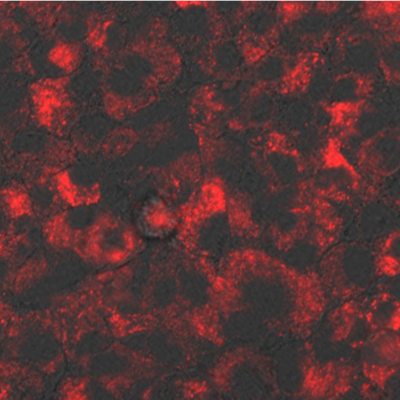

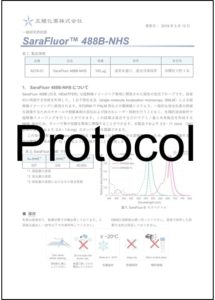
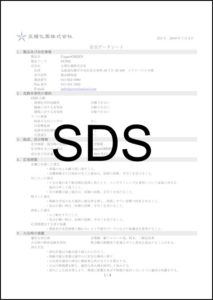
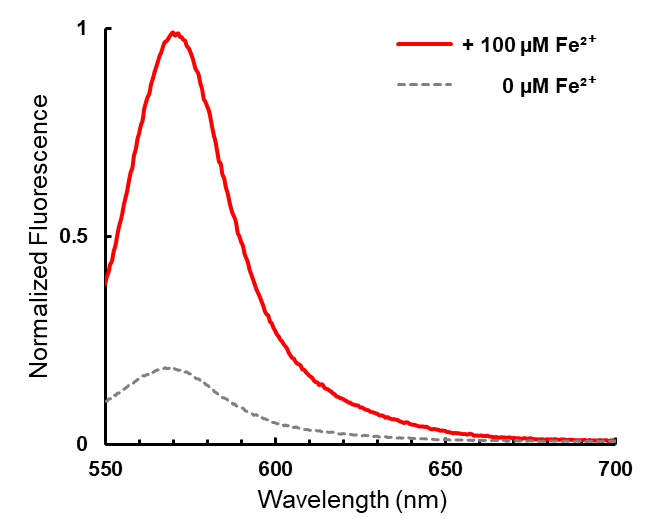
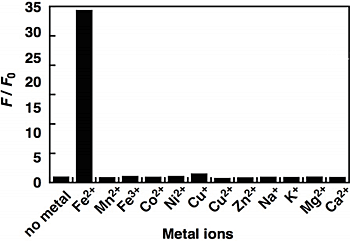
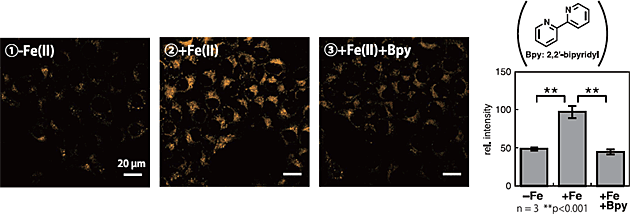

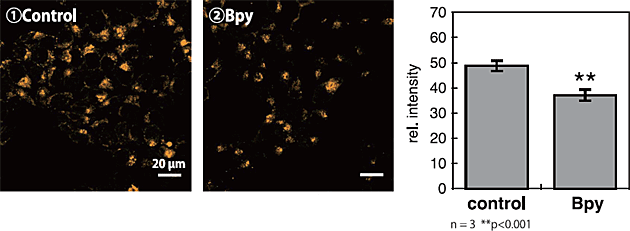
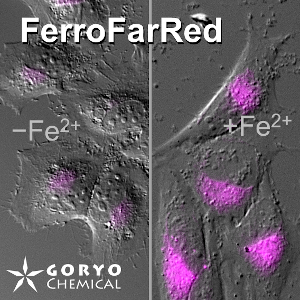

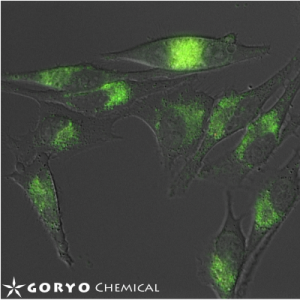
 Contact Us
Contact Us
